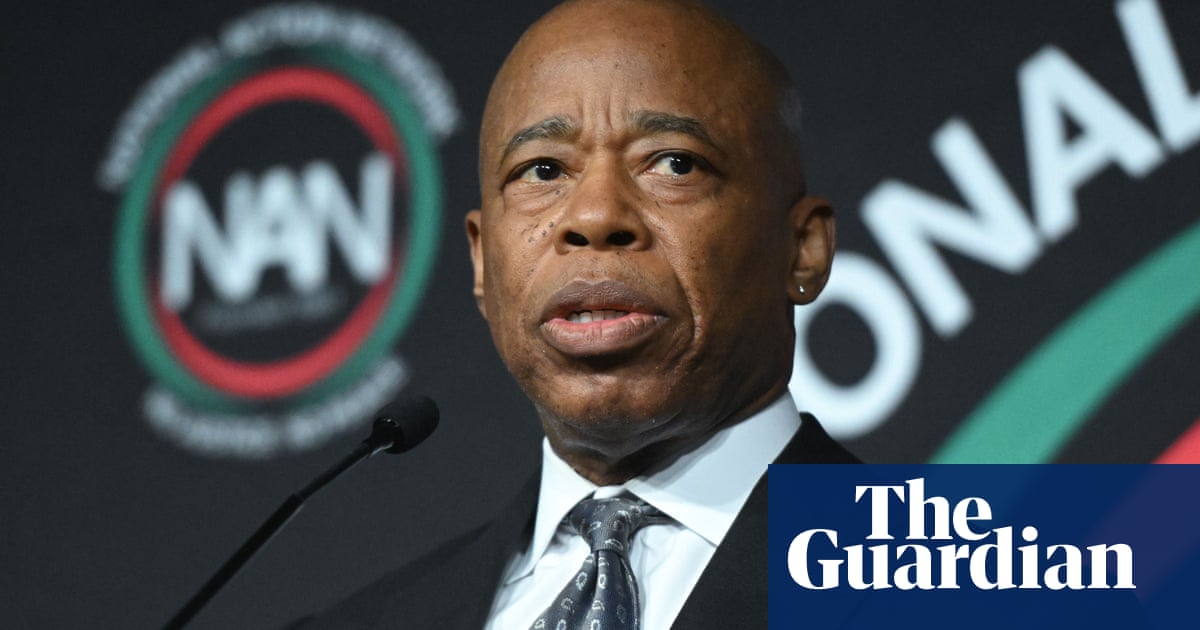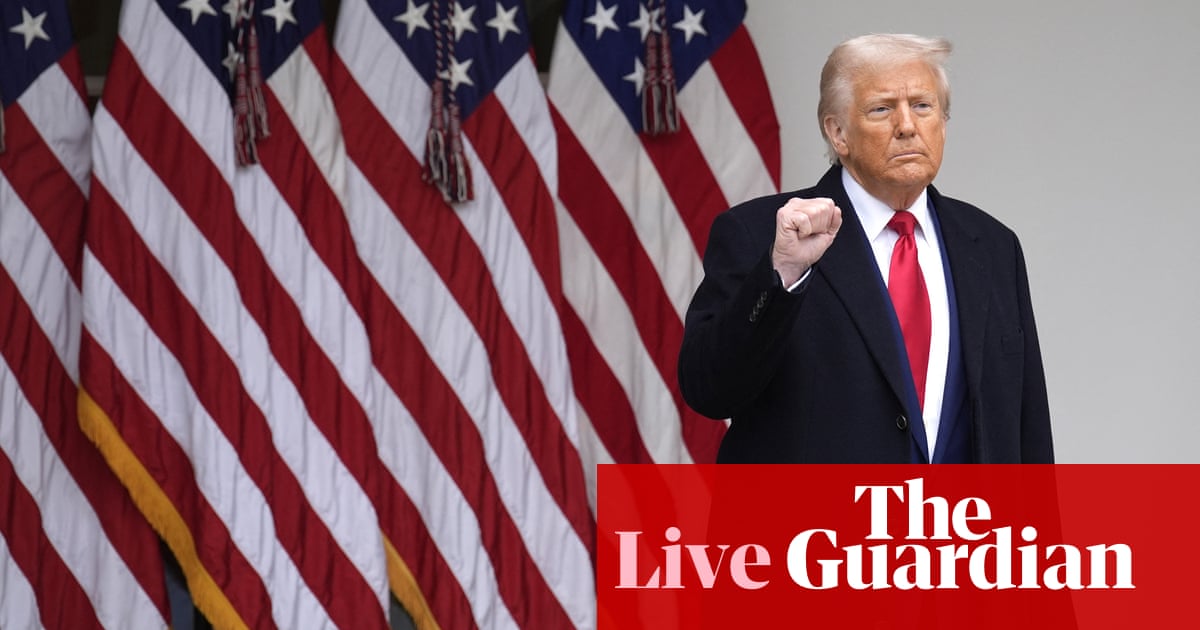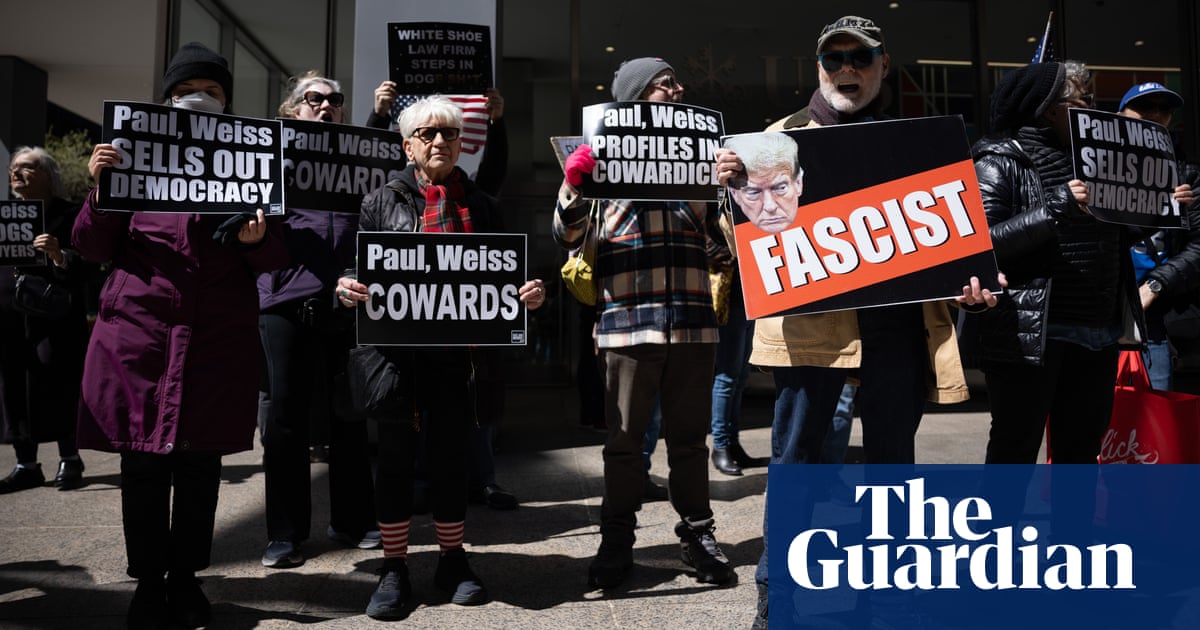Donald Trump has said “tariffs” is the most beautiful word in the dictionary.
The US president is expected to unveil his latest round of these border taxes on Wednesday at 4pm ET. In what he is calling “liberation day”, Trump has argued the step is needed to raise money and to encourage domestic manufacturing. But it is also rattling the global economy.
What is a tariff?
Tariffs are border taxes charged on the import of goods from foreign countries. Importers pay them upon entry to the customs agency of the country or bloc which levies them.
The taxes are typically charged as a percentage of a product’s value. For example, a tariff of 10% on a £100 product would carry a £10 charge at the point it is brought into the country.
As well as finished goods, tariffs are levied on components and raw materials, pushing up the costs to manufacturers significantly; particularly in a world of complex supply chains where borders are crossed many times. According to the Center for Strategic and International Studies, parts such as engines, transmissions, and other car components can cross the US-Canada and US-Mexico borders up to seven or eight times.
Serving as a barrier to trade, tariffs raise the price of an imported product for businesses and consumers. The US bank JP Morgan has estimated that tariffs of 25% would raise new car prices by $4,000 (£3,092).
They provide an incentive to buy a domestic tariff-free equivalent, where possible. Countries can also use non-tariff barriers to trade; including import quotas, licences and permits, regulations, safety standards and border checks.
The introduction of tariffs by one country can often collapse into a cycle of retaliation, or even a full-blown trade war. They are often used alongside other policy tools as a means of negotiation between nations, influencing far more than just economic outcomes.
What is Trump’s strategy?
The US is the largest goods importer in the world – buying products worth $3tn in 2023. It also has the largest trade in goods deficit – when imports exceed exports – worth $1tn.
Trump has long complained the deficit reflects “unfair” practices from US trading partners, and sees it as a sign of weakness in the US economy after decades of factory production shifting overseas. He has used them as a negotiation tool to extract concessions from US trading partners.
The president is also considering the potential revenue tariffs could raise for the federal budget, which would be important to offset the impact of his tax-cutting proposals. However, both cannot be true. To reliably raise revenue, a tariff would need to be permanent, rather than used as a bargaining chip.
What could the impact be?
Additional costs from tariffs are typically borne by the end consumer, meaning Trump’s plans are likely to push up US living costs. The big fear is that throwing grit in the wheels of trade will knock global economic growth and stoke inflation.
Even before the introduction of new US tariffs, the threat of them has rattled global financial markets and dented business and consumer confidence. This has a chilling impact on household spending and business investment.
Borrowing costs have risen sharply for governments around the world. For nations with already high levels of debt after the succession of shocks since the 2008 financial crisis, this has added to pressure to balance the books, and prompted political challenges.
The Organisation for Economic Co-operation and Development (OECD) warned last month that a scenario in which tariff rates are permanently raised by the US and all of its trading partners by an additional 10 percentage points, global output could fall by about 0.3% by the third year after their introduction. Global inflation could rise by 0.4 percentage points per annum on average over the first three years, the OECD said.
Is this a new tactic?
Trade barriers, taxes and tariffs have been a feature of the world economy for centuries, including as a catalyst for wars and revolutions, including the Boston tea party and the second world war. The barriers have been steadily dismantled over recent decades, amid the rise of globalisation. Trump – who also imposed tariffs in his first term as president – is not the first US president to shock the UK on trade.
Most economists agree trade liberalisation has helped to lift more than a billion people out of poverty worldwide, while supporting living standards in rich countries. But there are also tensions; from the hollowing out of manufacturing, to environmental and social challenges associated with complex, resource intensive, and sometimes exploitative global supply chains.
Which countries could be hit hardest?
The US would take a “significant hit”, with a 0.7% fall in output. The US’s largest trading partners, Canada and Mexico, would also be deeply affected.
Washington has a particular grievance with what the US treasury secretary Scott Bessent has called the “Dirty 15” countries, which make up about three-quarters of the US trade deficit.
The US’s largest trade in goods deficit with a single country is with China, worth $295bn in 2024. This was followed by the EU, at $235bn.
Trump also wants the tariffs to be “fair and reciprocal” to correct what he sees as longstanding imbalances in international trade arising from non-tariff barriers and taxes used by other countries. This includes value-added taxes (VAT), used in European nations in particular.
The president sees VAT as problematic because it is paid by customers of US-manufactured goods, while Washington does not have a similar federal tax levied on imports from overseas. However, many experts counter that VAT is paid on locally made goods as well as imports.

 German (DE)
German (DE)  English (US)
English (US)  Spanish (ES)
Spanish (ES)  French (FR)
French (FR)  Hindi (IN)
Hindi (IN)  Italian (IT)
Italian (IT)  Russian (RU)
Russian (RU)  1 day ago
1 day ago
























Comments